France showcases its most famous museum masterpieces with two new gold and silver coin ranges
Another new series from the Monnaie de Paris will launch on 12 September and like most of the coins issued by this long-running organisation, they delve into the rich history of a nation known for its love of art. Called Museum Masterpieces, the focus is less on actual French art but more on the works of art from around the world that reside in French museums, and there are plenty of those.
No surprises on the coin formats. A 22.2 gram 90% silver and a 7.78 gram 99.9% gold have been stalwarts of the Monnaie de Paris coin output for some years now and both are present here. They do occasionally issue a design as a gold ounce coin and that’s the case with one of these, but don’t expect to be able to collect the whole series in this size.
Two designs this year then. The first celebrates a sculpture known worldwide; the Venus De Milo. A Greek statue currently residing in the Louvre in Paris, it was an obvious choice to kick off a series like this. This one is available in all three formats and given the popularity and widespread recognition of the subject, it’s easy to see why this one was chosen given the larger gold coin sells for over 2,000 Euro. A fine rendition of the statue against a fairly mundane background still works well overall. The second depicts a section of a famous Edouard Manet painting called Le déjeuner sur l’herbe (Luncheon on the Grass), I can’t say I’m a fan of the original artwork, but the coin looks great having chosen to feature the best part of the work rather than trying to cram the whole thing in. The way a painting frame holding the inscriptions has been worked into the design is first class.
The common obverse for the series features a composite of views of several French museums: the Musée d’Orsay, the Louvre, the Picasso Museum, the Rodin Museum and the Center Georges Pompidou. The denomination and the inscription ‘ RÉPUBLIQUE FRANÇAISE’ sit here. All comes come boxed with a certificate of authenticity. A good start to the series then with plenty more to come. Next year will see the sculpture ‘The Kiss’ by Rodin and the painting by Auguste Renoir called ‘Bal du moulin de la Galette’. Following years will see such subjects covered as the Mona Lisa, a self-portrait of Van Gogh, a work by Japanese artist Hokusai, and the dramatic work by artist Théodore Géricault titled ‘Le Radeau de la Méduse’.
Aphrodite of Milos, better known as the Venus de Milo, is an ancient Greek statue and one of the most famous works of ancient Greek sculpture. Created sometime between 130 and 100 BC, the statue is believed to depict Aphrodite, the Greek goddess of love and beauty (Venus to the Romans). It is a marble sculpture, slightly larger than life size at 203 cm high.
Part of an arm and the original plinth were lost following its discovery. From an inscription that was on its plinth, the statue is thought to be the work of Alexandros of Antioch; earlier, it was mistakenly attributed to the master sculptor Praxiteles. It is currently on permanent display at the Louvre Museum in Paris. The statue is named after the Greek island of Milos, where it was discovered.
The Aphrodite of Milos is widely renowned for the mystery of her missing arms. There is a filled hole below her right breast that originally contained a metal tenon that would have supported the separately carved right arm. There is a story attached to the missing arms involving the purchase of the statue by French naval officer, Jules Dumont d’Urville. “The tenacious d’Urville on arrival at Constantinople showed the sketches he had made to the French ambassador, the Marquis de Rivière, who sent his secretary in a French Navy vessel to buy it for France. Before he could take delivery, French sailors had to fight Greek brigands for possession. In the mêlée the statue was roughly dragged across rocks to the ship, breaking off both arms, and the sailors refused to go back to search for them.”. The story is untrue as early sketches of the discovery already showed the arms were missing. (Source: Wikipedia)
Édouard Manet (23 January 1832 – 30 April 1883) was a French painter. He was one of the first 19th-century artists to paint modern life, and a pivotal figure in the transition from Realism to Impressionism.
Born into an upper-class household with strong political connections, Manet rejected the future originally envisioned for him, and became engrossed in the world of painting. His early masterworks, The Luncheon on the Grass (Le déjeuner sur l’herbe) and Olympia, caused great controversy and served as rallying points for the young painters who would create Impressionism. Today, these are considered watershed paintings that mark the start of modern art. The last 20 years of Manet’s life saw him form bonds with other great artists of the time, and develop his own style that would be heralded as innovative and serve as a major influence for future painters.
Le Déjeuner sur l’herbe (The Luncheon on the Grass) is a large oil on canvas painting by Édouard Manet created in 1862 and 1863. It depicts a female nude and a scantily dressed female bather on a picnic with two fully dressed men in a rural setting. Rejected by the Salon jury of 1863, Manet seized the opportunity to exhibit this and two other paintings in the 1863 Salon des Refusés where the painting sparked public notoriety and controversy. The piece is now in the Musée d’Orsay in Paris.
The painting features a nude woman casually lunching with two fully dressed men. Her body is starkly lit and she stares directly at the viewer. The two men, dressed as young dandies, seem to be engaged in conversation, ignoring the woman. In front of them, the woman’s clothes, a basket of fruit, and a round loaf of bread are displayed, as in a still life. In the background, a lightly clad woman bathes in a stream. Too large in comparison with the figures in the foreground, she seems to float above them. The roughly painted background lacks depth – giving the viewer the impression that the scene is not taking place outdoors, but in a studio. This impression is reinforced by the use of broad “studio” light, which casts almost no shadows. The man on the right wears a flat hat with a tassel, of a kind normally worn indoors. (Source: Wikipedia)
SPECIFICATION
| NAME | 2017 SILVER | 2017 GOLD | 2017 GOLD (DE MILO ONLY) |
| DENOMINATION | €10 Euro | €50 Euro | €200 Euro |
| COMPOSITION | 0.900 silver | 0.999 gold | 0.9999 gold |
| WEIGHT | 22.2 grams | 7.78 g | 31.104 g |
| DIAMETER | 37.00 mm | 22.00 mm | 37.00 mm |
| FINISH | Proof | Proof | Proof |
| MODIFICATIONS | None | None | None |
| MINTAGE | 5,000 | 500 | 250 |
| BOX / COA | Yes / Yes | Yes / Yes | Yes / Yes |




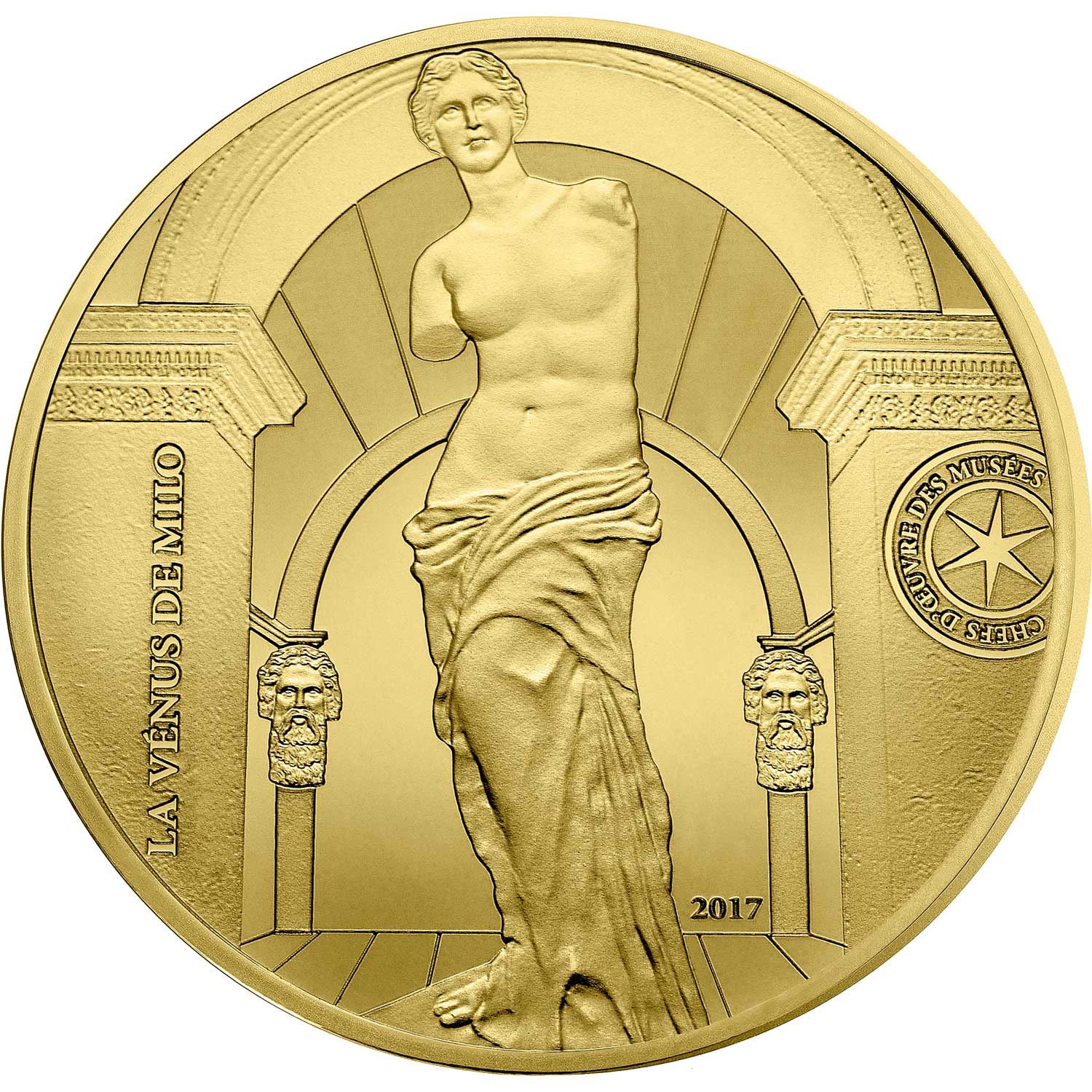
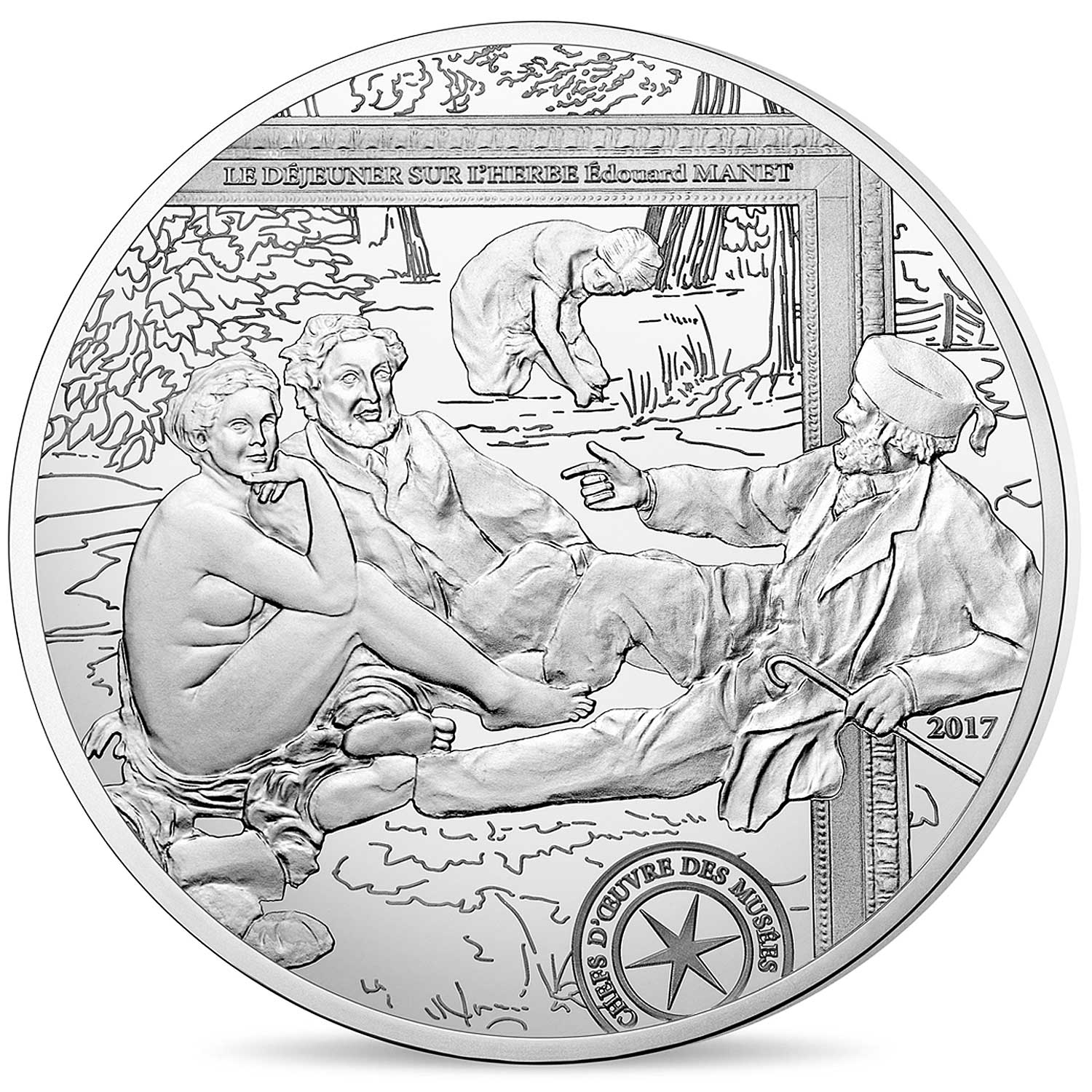
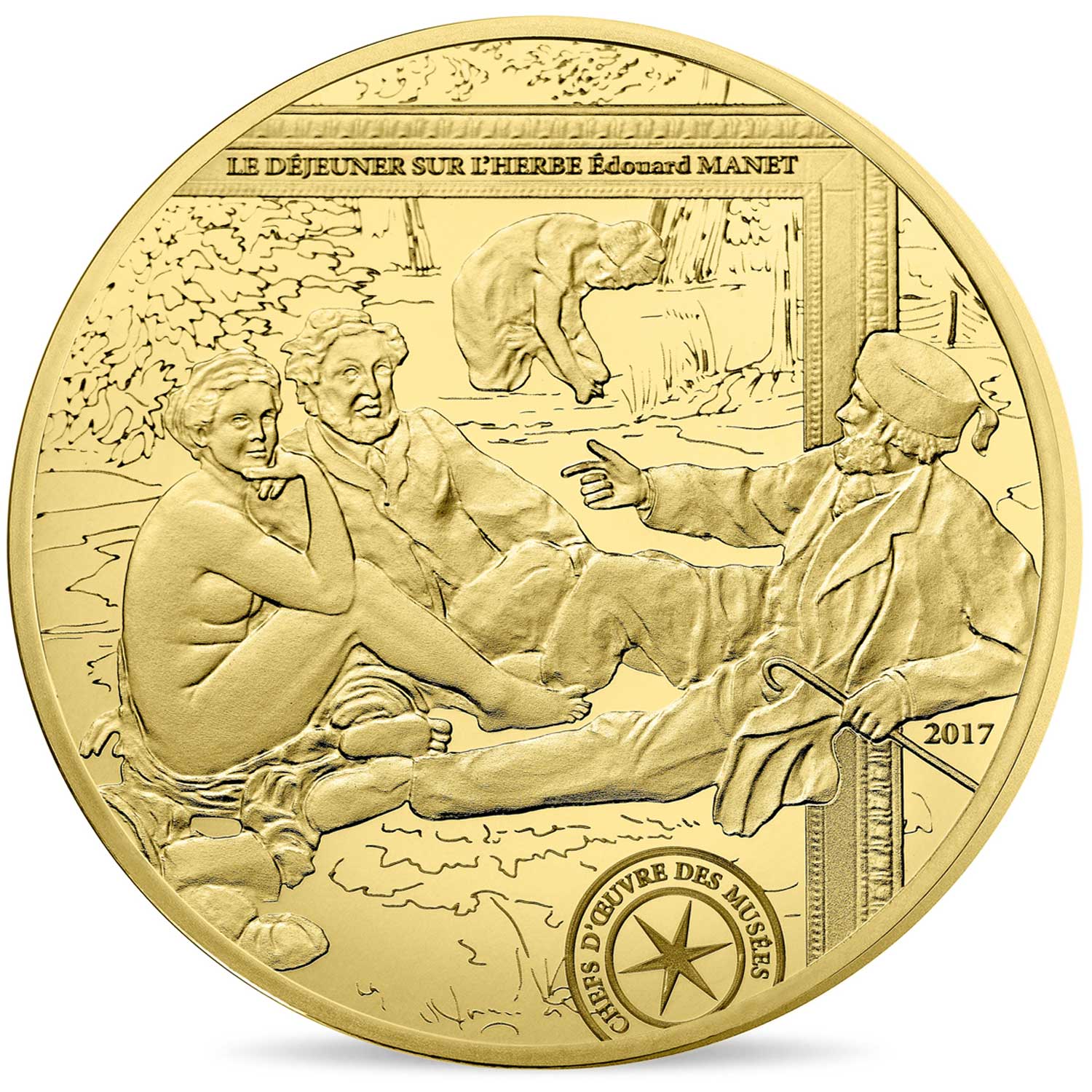
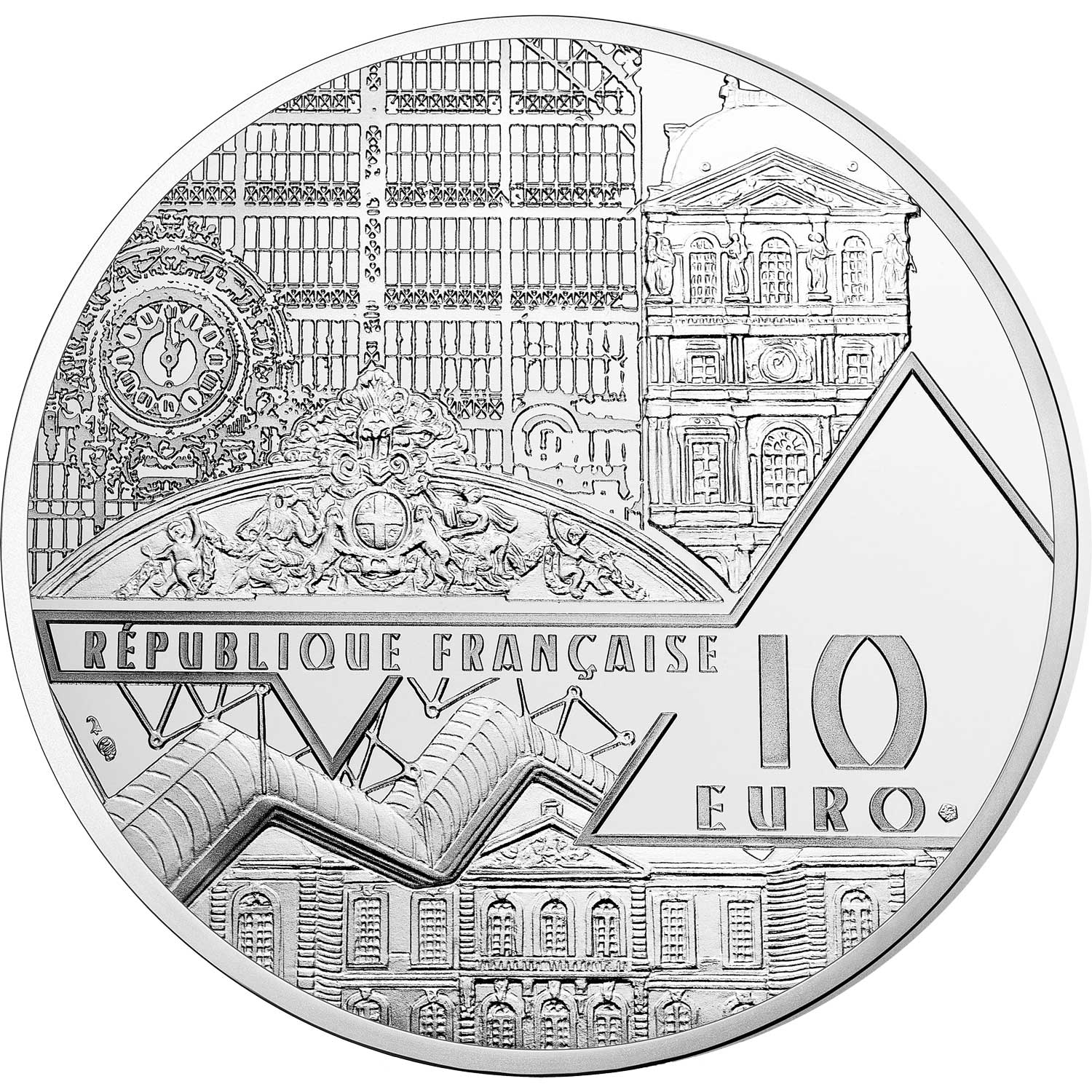
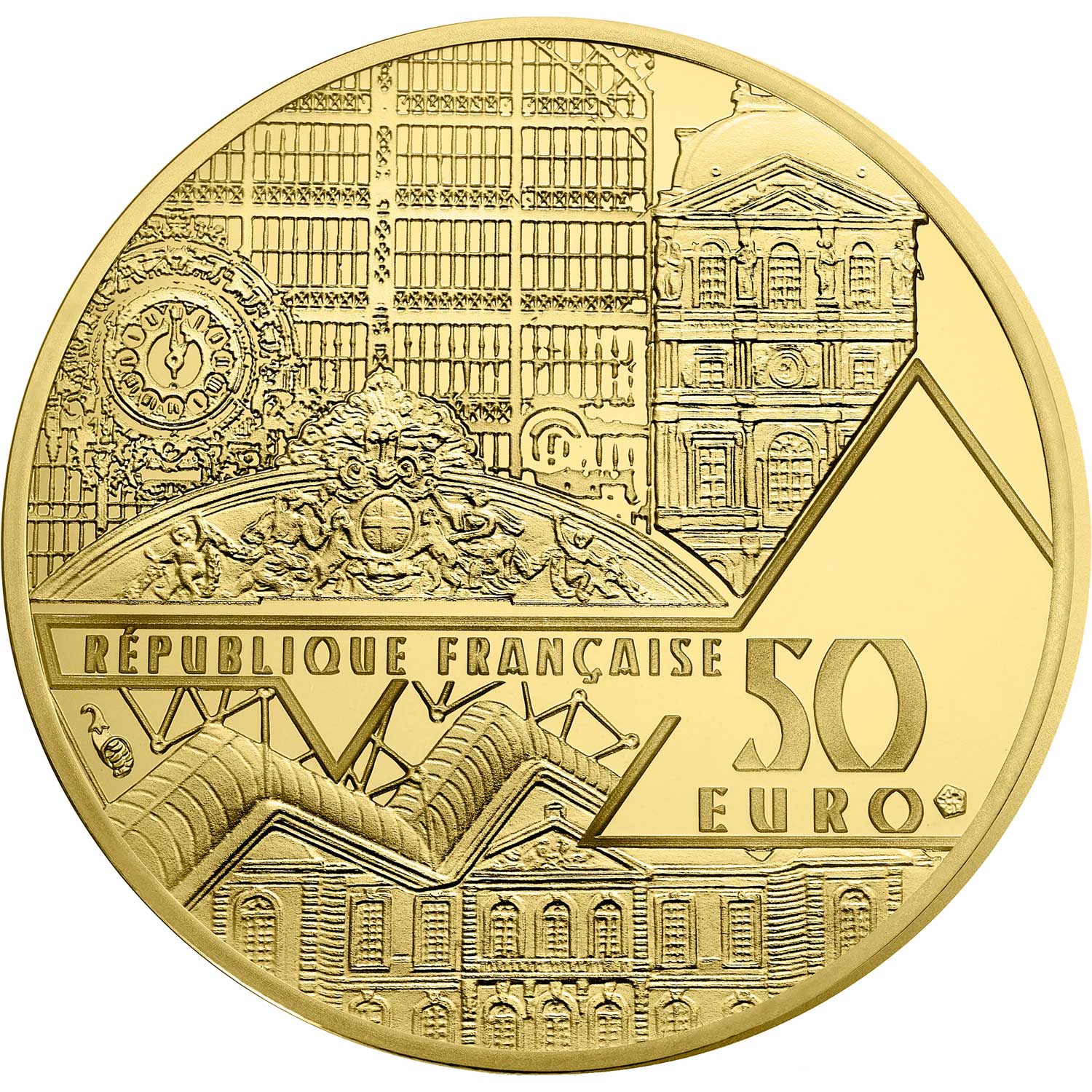
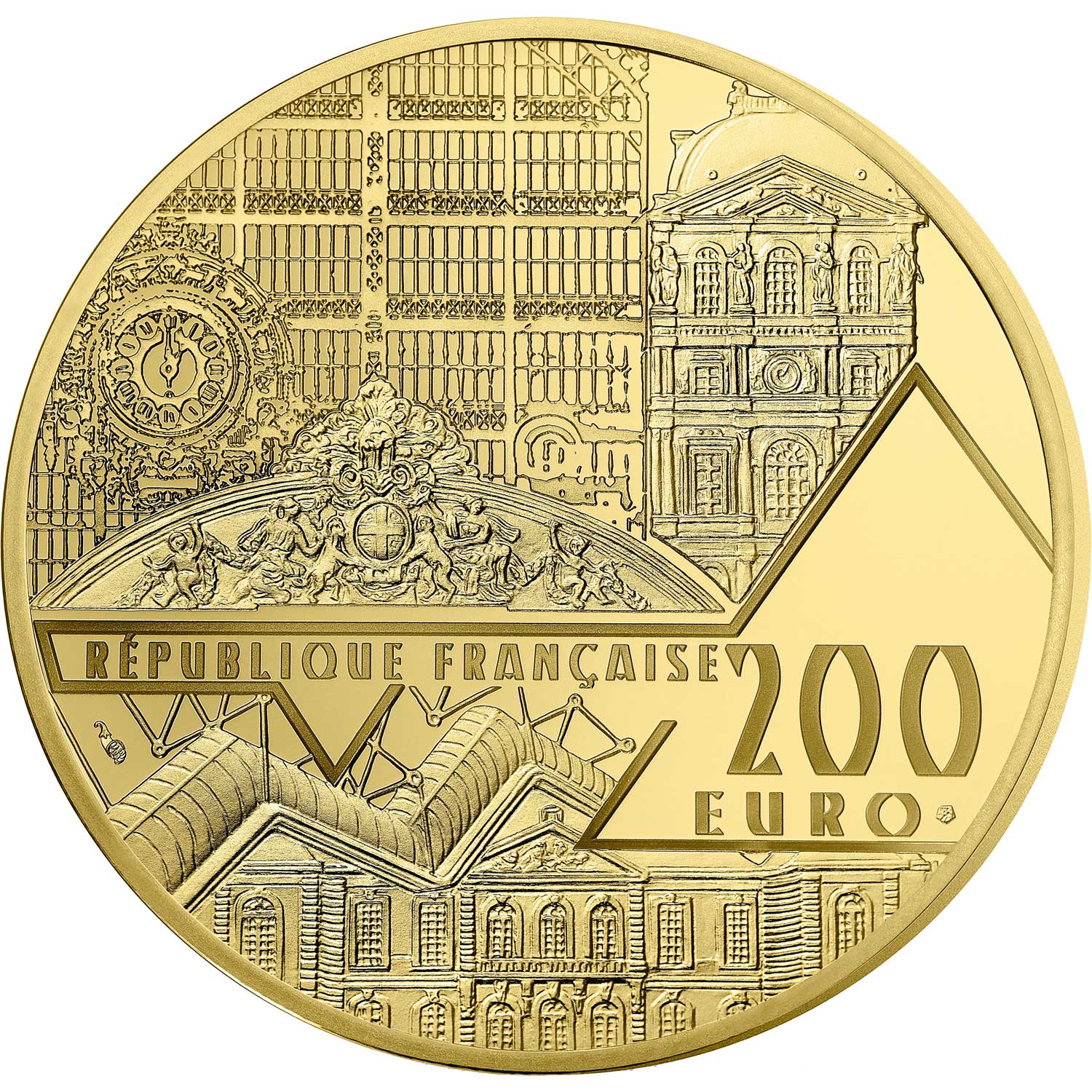
Leave A Comment